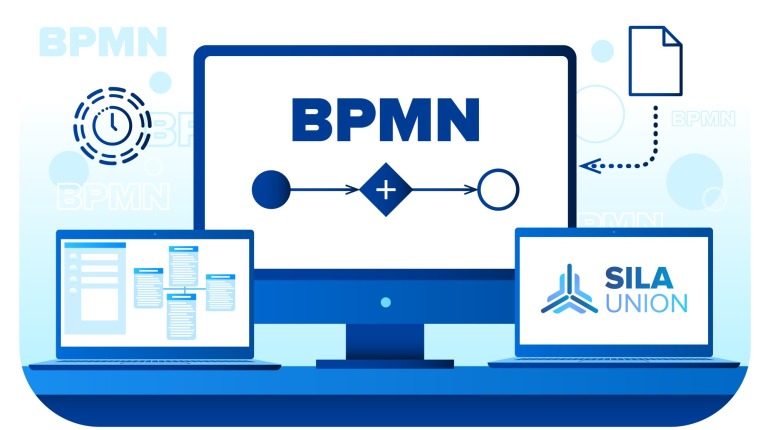
BPMN as the basis of the digital architecture of a Russian industrial company in the SILA Union system
Russian industrial companies are facing a difficult challenge: how to make business processes transparent, efficient, flexible, and able to quickly adapt to changes in the new economic environment. The key to the solution lies in the transition from disparate improvements in the form of the introduction of new ERP systems or IoT to a fundamental rethinking of the approaches of the company's business logic itself and the construction of a holistic digital architecture. In this context, BPMN (Business Process Model and Notation) notation is transformed from a simple diagramming tool into a strategic asset — a universal space where business and IT jointly design the company's future.
However, the notation itself is just a theory. It acquires real value when implemented in a specific software environment that provides end-to-end work with processes from modeling to analysis and optimization. Such a solution for the Russian industrial sector is the SILA Union platform, a domestic digital environment for integrated design and management of corporate architecture.
SILA Union provides a complete set of tools for practical work with BPMN, allowing not only to model, but also to analyze, improve and document business processes in a single space.
In this article, we will look at:
1. What is BPMN today: from the basic elements to its role as the foundation of digital architecture.
2. How BPMN is implemented in the SILA Union system: platform capabilities for end-to-end modeling and analysis.
3. Why it is important to implement specialized modeling software in BPMN: how the use of BPMN in SILA Union helps to increase transparency and accelerate organizational changes in an industrial enterprise.
We will show how the combination of BPMN + the Russian SILA Union platform covers the key needs of industrial giants in the new economic conditions.
Representation and use of BPMN in SILA Union
At SILA Union, BPMN is a key language for modeling business processes, creating the basis for architecture design and further automation.
Notation is much more than just a set of graphical elements to describe a sequence of actions. It is a universal language capable of structuring a dialogue between business analysts who formulate requirements, corporate architects who see the organization as a whole, and IT architects who will translate processes into working solutions.
Key advantages of BPMN:
1. Disambiguation. The notation eliminates the ambiguity of natural language by using strict visual semantics.:
– "Pools" and "lanes" clearly delineate areas of responsibility between departments, employees, or systems.
– "Gateways" uniquely define the points of decision-making and branching logic, which eliminates discrepancies during development.
Examples of the presented elements are shown in Figures 1-4.

Figure 1. Graphical representation of the "Track" symbol in SILA Union

Рisunok 2. Graphical representation of the symbol "Pool" in SILA Union
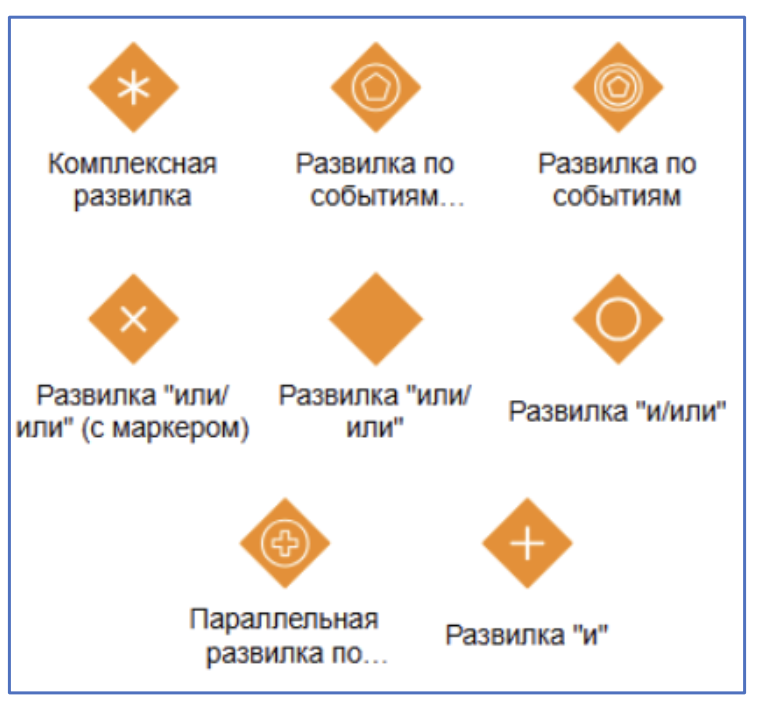
Figure 3. Graphical representation of the "gateway" symbol in SILA Union
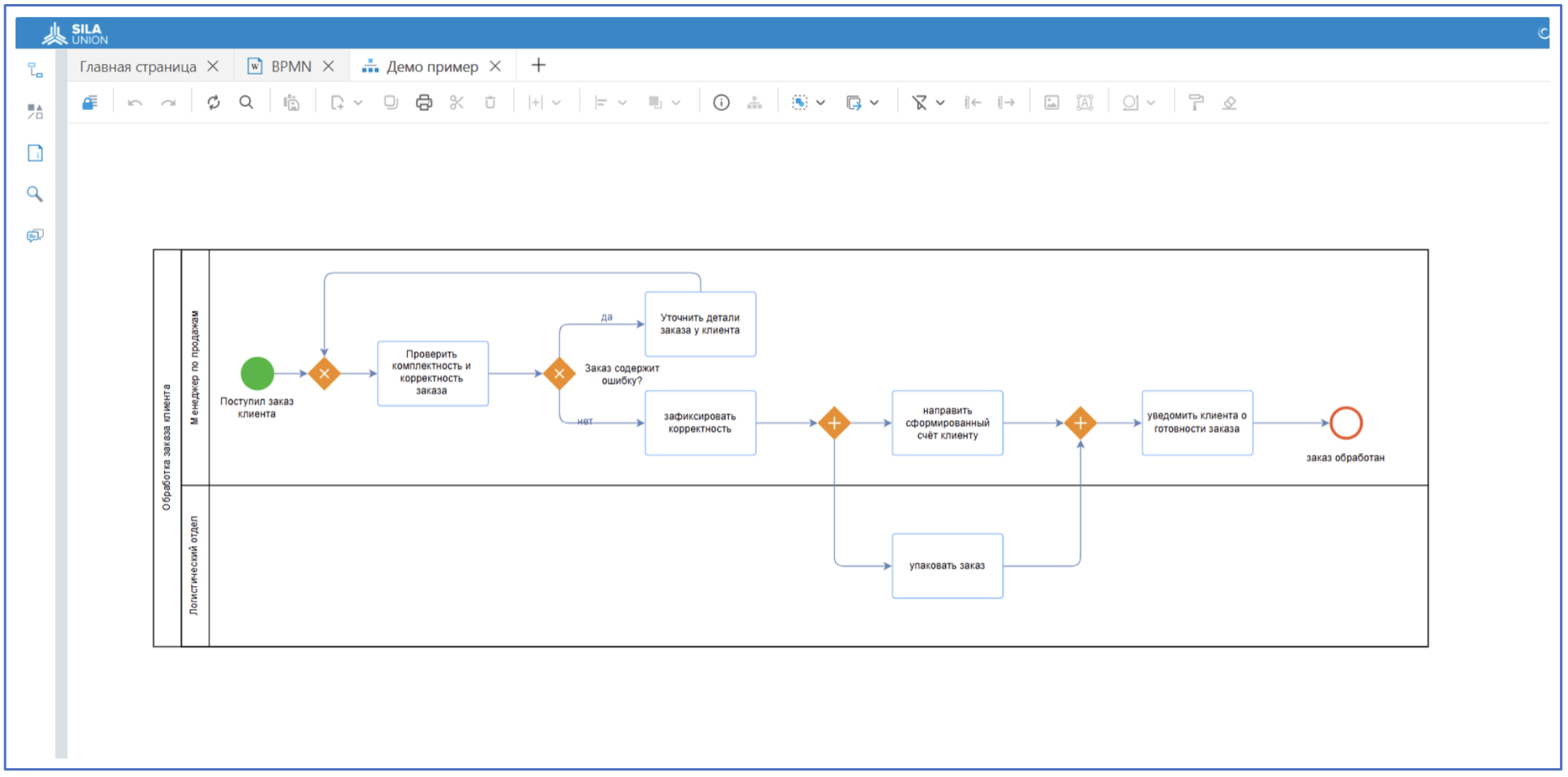
Figure 4. Example of a process in BPMN notation in SILA Union
2. A tool for strategic analysis. For corporate and business architects, BPMN serves as a strategic analysis and optimization tool. Process modeling at the level of detail, which includes not only actions, but also trigger events, artifacts, data, and messages, allows for in–depth "as is" analysis.
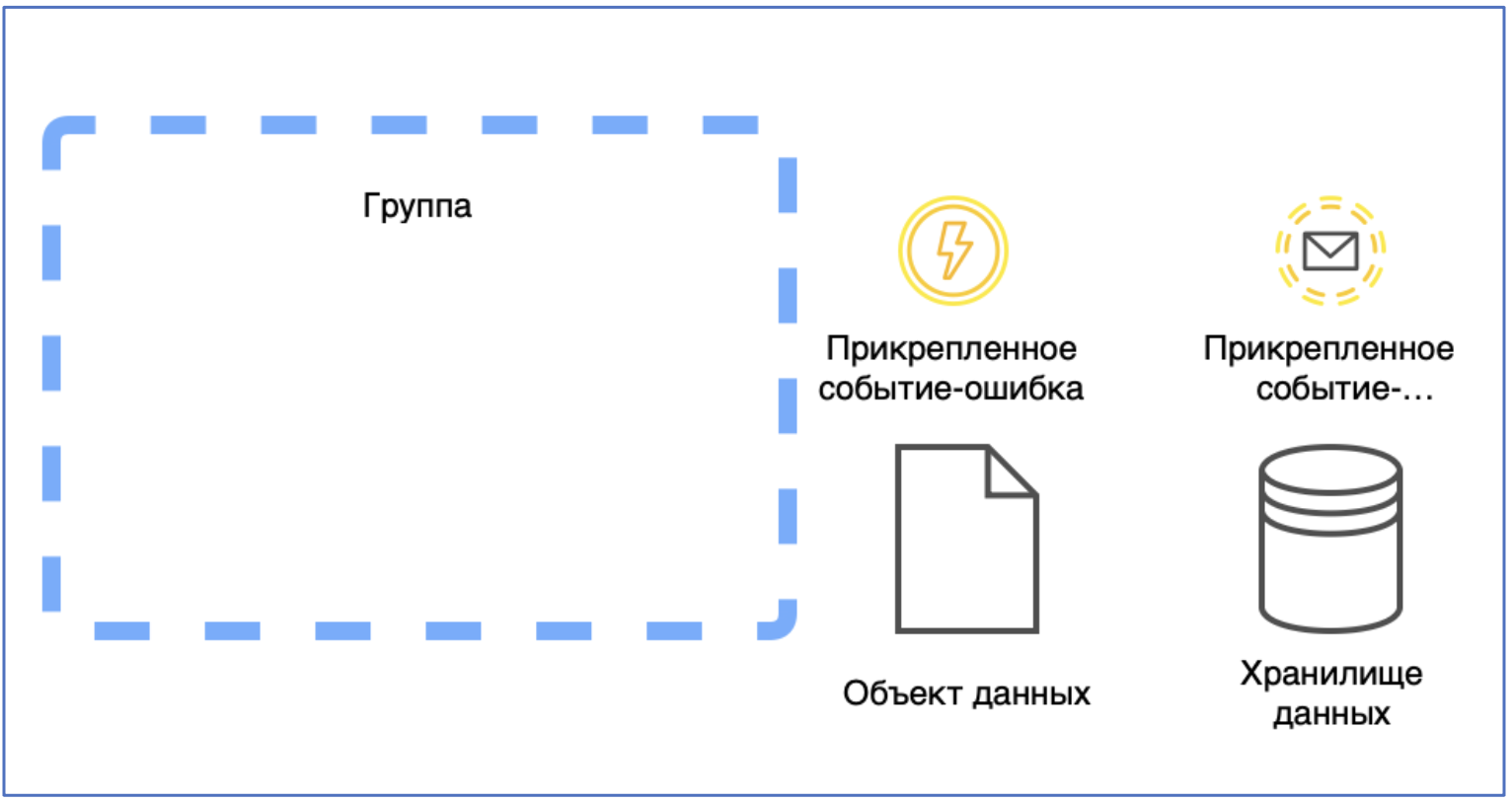
Figure 5. Events, data, artifacts, and messages in SILA Union
This identifies bottlenecks, redundant operations, and areas for automation. Further, the "as it should be" model becomes a visual transformation plan that is understandable to both the management of business units and technology teams. It allows you to assess the impact of changes on various components of the enterprise architecture before starting expensive development projects.
How to use BPMN effectively
However, effective use of BPMN requires a conscious approach. The main mistake is trying to model absolutely everything on one diagram, creating overloaded and difficult–to-understand constructions. The principle of hierarchical decomposition is the key to success: from a general high-level process map to detailed diagrams of individual subprocesses. It is important to remember that BPMN is not about creating perfect pixel graphics, but about accurately transmitting logic. In addition, the notation offers several levels of detail, from simple diagrams for discussion with business users to complex executable models full of technical specifications for IT professionals.
Case study: "Product Lifecycle Management"
ВAs a clear example of a process that requires a multi-level decomposition, consider the end-to-end process "Product Lifecycle Management" in the SILA Union system. This process perfectly demonstrates the power of BPMN to describe complex, time- and participant-distributed business procedures that cannot be adequately displayed on a single diagram.
The top-level process (Level 0) is a general map of the product lifecycle from idea to decommissioning. It consists of five key subprocesses connected in series.
The following figures (7-8) show the decomposition of the "Development and Testing" and "Technical Development" subprocesses.
Figures 6-8 are presented below.

Figure 6. Top-level process in SILA Union

Figure 7. Decomposition of the "development and testing" subprocess in SILA Union
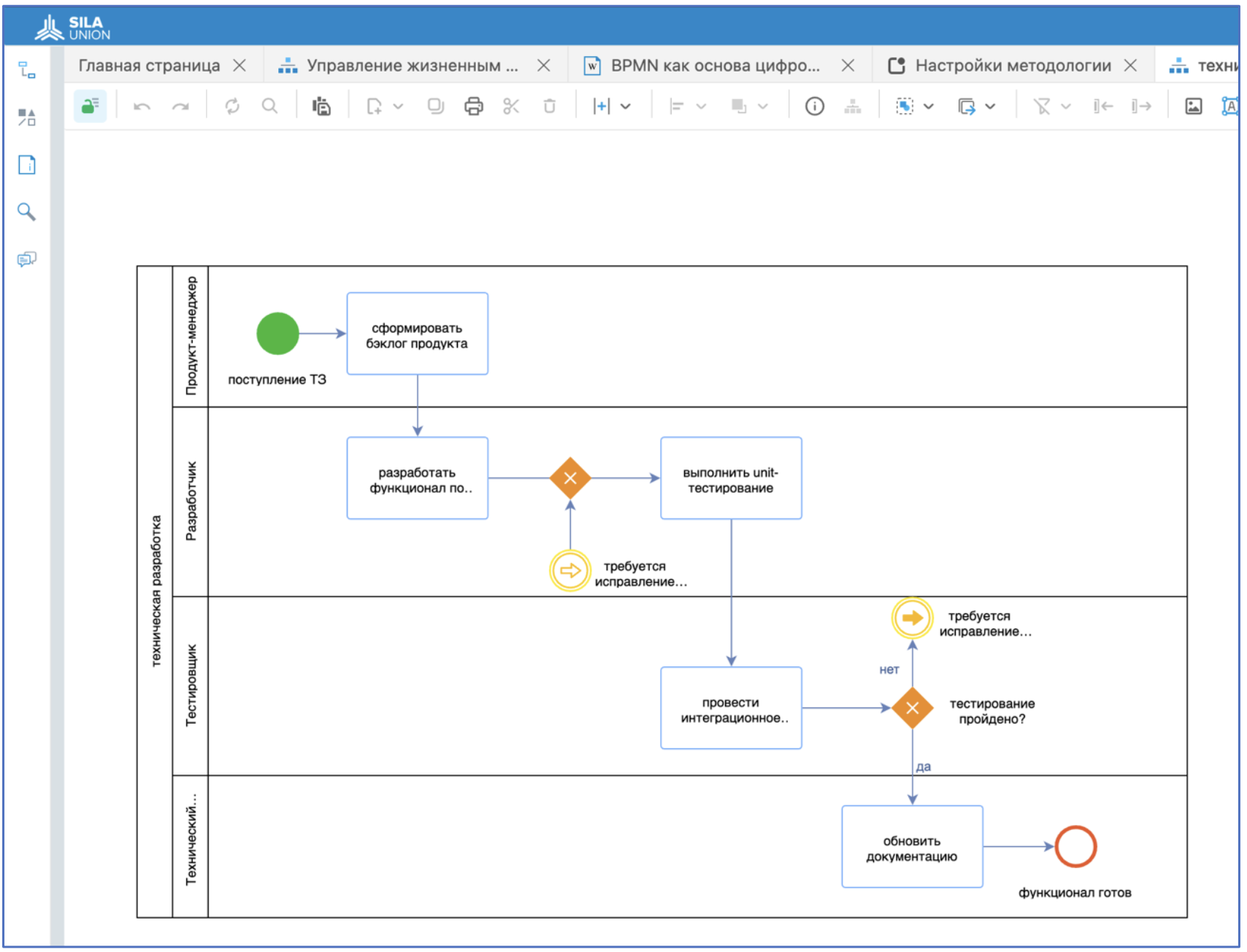
Figure 8. Decomposition of the "Technical Development" subprocess in SILA Union
This approach to hierarchical decomposition modeling solves several critical tasks. For business architects and top management, the top-level map provides a strategic vision for the entire cycle. Product and department managers can work with first-level diagrams to manage milestones. For business analysts and IT architects, detailed diagrams of the second and subsequent levels become a source of requirements and the basis for designing architectural solutions and system integrations. This prevents the creation of monolithic, unreadable diagrams and provides each stakeholder with the level of detail necessary for their tasks, while maintaining the integrity and coherence of the overall business model.
From chaos to order: Why is BPMN necessary for an industrial company?
A traditional industrial company, especially one that has gone through many mergers and acquisitions, is often a complex conglomerate of disparate processes. Individual workshops, supply, logistics, and sales services operate according to their own, often informal, rules. This leads to a “bunker” effect, when information is lost at the junctions between departments, and the overall picture of what is happening is blurred. The processes are described in hundreds of pages of text regulations that no one reads and that cannot be quickly adapted to market changes.
BPMN is a visual language that allows you to overcome this chaos. Its power lies in its versatility and simplicity. Like a drawing in mechanical engineering, a BPMN diagram is understandable to both a business analyst, a technical specialist, and an ordinary contractor. Using a standard set of elements (processes, events, gateways, data flows), it is possible to describe any process with a high degree of detail — from approving an application for the purchase of complex equipment to managing the product lifecycle on an assembly line.
Strategic advantages of BPMN for digital architecture at SILA Union
At SILA Union, the introduction of BPMN as the basis of the business process architecture provides companies with a number of key advantages, which include a unified vision and end-to-end transparency, a framework for automation and import substitution, increased flexibility and adaptability, compliance and risk mitigation, and human capital development.
BPMN creates a single information field for all participants in the process. Management gets the opportunity to see end-to-end processes as a whole, rather than their fragments within a single department. This allows you to accurately identify bottlenecks, redundant operations, and areas of responsibility. You can simulate and analyze the entire cycle from receiving an order from a customer to the shipment of finished products, identifying the causes of delays.
Under the conditions of sanctions pressure and rapidly changing market conditions, the ability to quickly rebuild processes is becoming a competitive advantage. BPMN allows you to conduct a "what-if" analysis and make changes to the process model before it is actually rebuilt into an operational activity. A company can quickly adapt logistics chains, interaction schemes with new suppliers, or internal regulations by simply changing the diagram and launching a new version of it in the executing system.
It is critically important for industrial companies to comply with industry standards, technical regulations, and regulatory requirements. BPMN allows you to visually register control points, quality control points and the stages of mandatory approval. This makes processes more predictable and manageable, reducing operational and compliance risks.
BPMN's universal language breaks down barriers between departments. New employees get up to speed faster, understanding not just a list of responsibilities, but their role in the overall value stream. This contributes to the formation of process-oriented thinking at all levels of the organization.
Thus, for the SILA Union platform, BPMN is a strategic driver that ensures the integrity, flexibility and executability of the corporate architecture, turning it from static documentation into a dynamic framework for digital enterprise management.
Implementation of specialized modeling software: why it is critically important and why SILA Union
Many companies mistakenly believe that the introduction of BPMN begins and ends with the creation of diagrams in graphic editors. However, such static images remain only illustrations for documentation, without becoming the real basis of digital architecture. A key step that separates theory from practice is the introduction of specialized business modeling software such as SILA Union.
Why is it important to implement specialized software?
SILA Union transforms BPMN into the central node of an integrated process management system.
1. Creation of a process repository, a digital twin of the company. The process models in SILA Union are not static. They become part of a unified system where they are linked to goals, KPIs, data, organizational structure, and IT. Any change in the process automatically reflects its impact on the entire enterprise architecture.
2. A direct path to automation. The BPMN model, correctly created in SILA Union, is a ready-made automation project. Modern BPM systems can directly import such models, significantly speeding up development and reducing errors when transferring requirements from business to IT.
3. Support for an end-to-end design approach. BPMN is just one of many business architect tools. SILA Union supports more than 70 notations (IDEF, ArchiMate, UML, etc.) and allows you to comprehensively describe all aspects of activities: from strategic maps to data structure and IT landscape, ensuring the integrity and consistency of architecture.
Why SILA Union?
Choosing SILA Union is a strategic decision to build technological sovereignty.
• Architectural integrity: This is not an isolated tool for BPMN, but a full-fledged platform for designing the entire corporate architecture, which makes BPMN a natural and integrated part of the management system.
• Extensive functionality: Support for dozens of notations allows you to cover all the needs of business and IT modeling within a single platform, avoiding many heterogeneous tools.
• Domestic development: As a Russian product, SILA Union guarantees compliance with regulatory requirements, data security and independence from external suppliers, which is critically important for an industrial leader.
Conclusion
BPMN is a globally proven methodological framework for the process approach, but its potential is revealed only when used in conjunction with specialized software. SILA Union's choice to implement BPMN is a choice in favor of building a holistic, flexible, manageable, and executable enterprise architecture.
You will move from a set of disparate tools to a single business management system, where BPMN is a universal communication language linking strategy, business processes, data and IT into one coherent system. This is an investment in creating the foundation for digital transformation, technological sovereignty and sustainable development of an industrial leader company.
The author of the article is Alina Ozhogina, business analyst at SILA Union.





